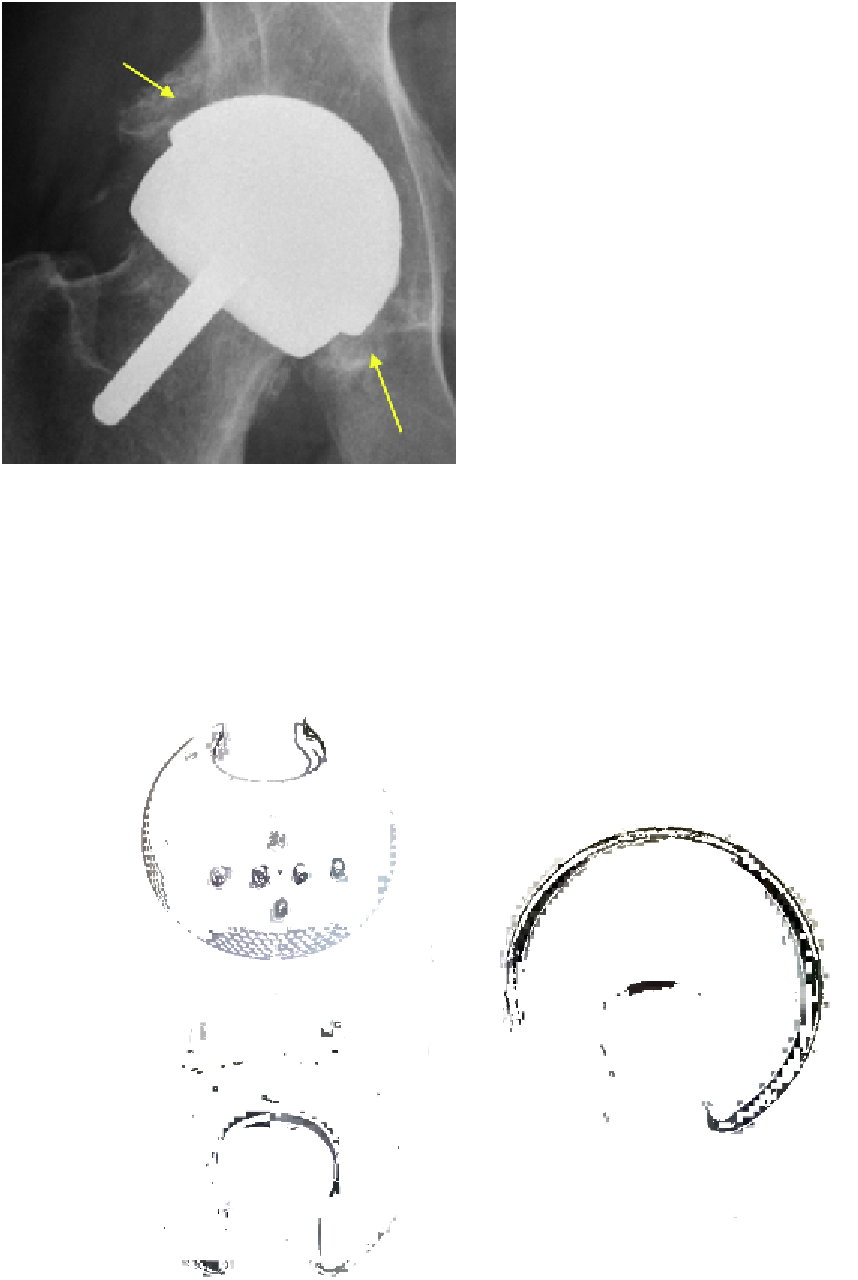Biomedical Engineering Reference
In-Depth Information
as possible, physiological stress distribution in the
periacetabular bone
[79,90
e
92]
. The Cambridge Cup
comprised a 3-mm-thick bearing surface of
UHMWPE molded to a 1.5 mm backing of 30%
carbon-fiber-reinforced polybutyleneterephthalate
(CFRPBT). The cup was designed to flex, when
loaded, in concert with the surrounding acetabular
bone so that micromotion at the bone
e
prosthesis
interface would be minimized
[79,90,92]
.During
a 5-year prospective observational trial, the HA-
coated Cambridge Cups exhibited successful function,
whereas the uncoated cups tended to migrate
[92]
.
14.7 PEEK in the Acetabulum
Based on the encouraging clinical results of the
Cambridge Cup
[79,92]
, the horseshoe implant
concept was further developed to provide a thin
monoblock cup (MITCH
-PCR Cup) that retains the
flexible characteristics of the earlier design, simplifies
the implant structure, and provides a contemporary
bearing surface
[93]
.TheMITCH
Figure 14.10
Peripheral fixation of a rigid hemispher-
ical acetabular resurfacing component (indicated),
resulting in retroacetabular stress shielding.
(
Fig. 14.11
), was developed with the dual objectives
of resurfacing the cartilage and underlying sub-
chondral bone of the horseshoe-shaped articular
portion of the acetabulum and reproducing, as closely
-PCR cup (not
approved for use in the United States by the FDA)
is fabricated using carbon-fiber-reinforced poly-
etheretherketone (CFR-PEEK) for the entire construct
Figure 14.11
Cambridge Cup with (top left) and without (bottom left) HA coating on the backside.


